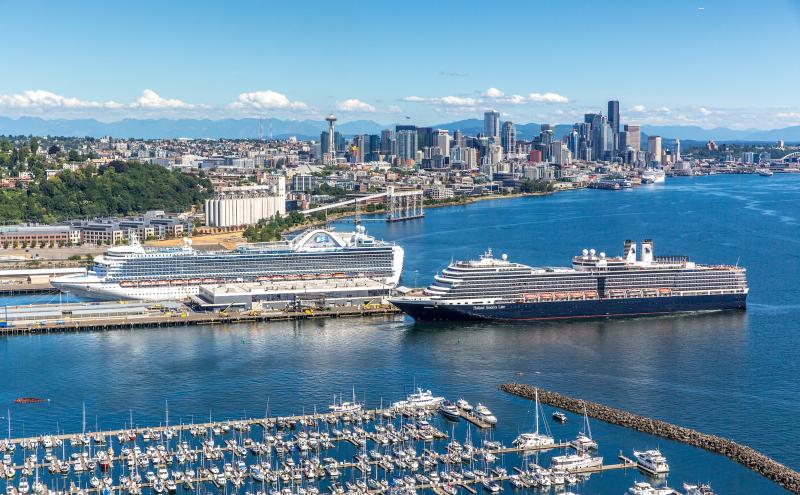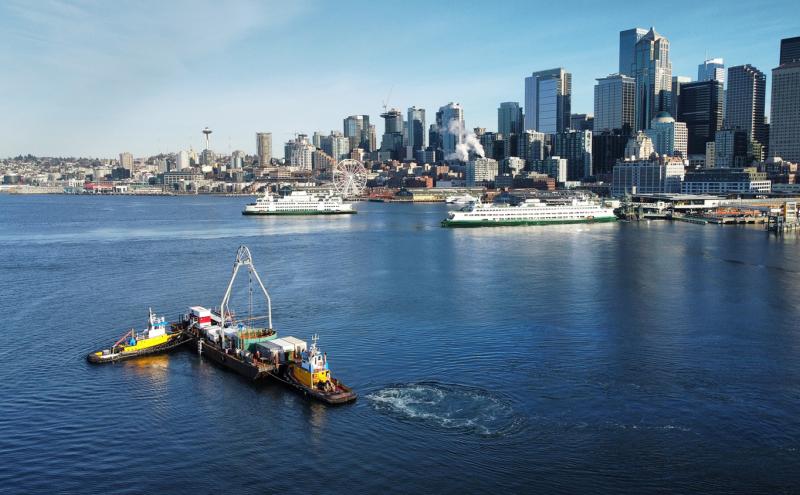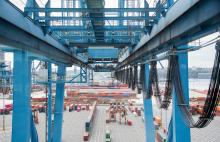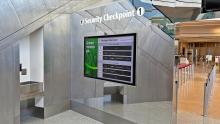
By Jack Winterhalter, Washington Sea Grant Hershman Fellow
You’re probably familiar with the process of filing your taxes every year. You report all of your sources of income, specify any exemptions, and send your data to a government agency where it’s then verified. In many ways, this is similar to the process for inventorying and auditing the greenhouse gas emissions of an organization.
The Port of Seattle has made bold commitments to reduce greenhouse gas (GHG) emissions from direct Port sources and energy use to net zero or better by 2040, and to reduce indirect, Port-influenced GHG emissions to carbon-neutral or better by 2050. These goals align with internationally recognized emissions reduction targets to limit global warming to 1.5° C. Achieving these goals will require concerted effort across all sectors of the Port’s operations. The Port has been actively targeting and reducing emissions across our operations. To track our progress on these goals, we need to measure where GHG emissions come from and how they are changing. We do this by completing an annual Port-wide GHG emissions inventory.
Breaking down the emissions inventory
The GHG emissions inventory helps the Port track emissions from three main categories:
- Direct emissions (Scope 1): From sources the Port controls, like the airport’s central heating plant or fuel used in Port fleet vehicles
- Energy emissions (Scope 2): From electricity we purchase
- Indirect emissions (Scope 3): From sources the Port doesn’t control, but that occur at or near Port facilities, such as cruise, fishing, airlines, passenger vehicles, and grain terminal operations
GHG emissions data is calculated from fuel tracking software, purchase records, and utility bills. It allows the Port to prioritize actions, monitor trends over time, and, importantly, determine whether we are on track to meet our reduction goals. Find more details on how the Port measures GHG emissions and learn about emission sources and recent trends.
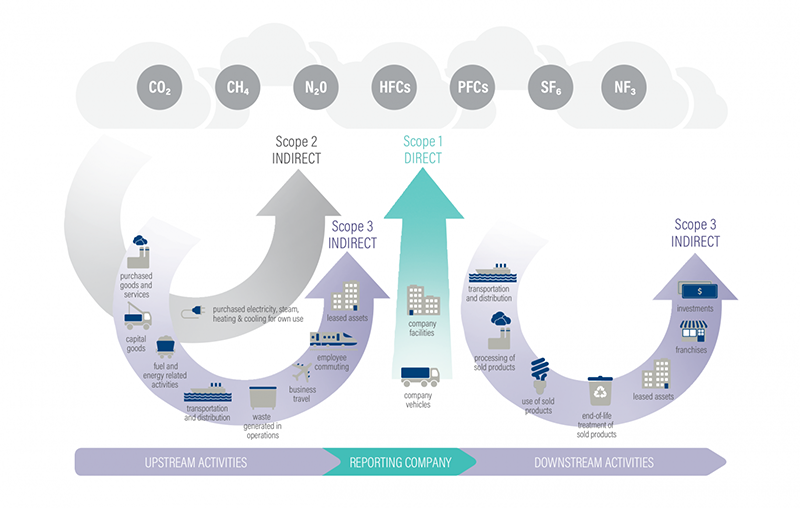
Above: A visual distinguishing the different scopes of emissions for a typical organization. Source: World Resources Institute/Creative Commons license.
How do we know the inventory is accurate?
The Port has conducted Scope 1 and 2 inventories annually since 2015 but verified results across the combined Maritime, Aviation, and Corporate divisions for the first time last year. The aviation division conducted its first Scope 1, 2, and 3 inventory in 2007 and was the first airport in North America to verify emissions under Airport Carbon Accreditation in 2014.
A third-party verification by an accredited group can help ensure that our inventory is comprehensive and accurate and that we did not miss any significant sources of GHG emissions. Most verification standards, including those the Port uses, follow the ISO 14064 standard for greenhouse gas accounting and the ISO 14064-3 standard for annual carbon footprint verification, set by the International Organization for Standardization. This verification provides a certified “stamp of approval” that a GHG emissions inventory is accurate and reliable (the level of accuracy of Scope 3 can vary depending on the quality of input data, however).
The results of the recently verified inventory covered Scope 1 and 2 GHG emissions from the Aviation, Maritime, and Economic Development divisions, including key GHGs such as carbon dioxide (CO2), methane (CH4), and nitrous oxide (N2O). The process involved publicly reporting results to The Climate Registry, a nonprofit organization that provides services for measuring, verifying, disclosing, and reducing carbon emissions, and a third-party-led audit of the emissions sources, data, calculations, and findings to ensure results were within a 5% accuracy range.
Suwilanji Silozi is a Senior Environmental Management Specialist at the Port and supports GHG emissions accounting and reporting for both maritime and airport operations. Data transparency is incredibly important and plays a huge role in decarbonization efforts. “As a public entity, verifying our emissions is essential to building public trust in our emissions reporting,” Silozi said. “It enhances data transparency by clearly showing where our emissions originate and how they are calculated.”
Silozi compares the verification process to a financial audit. The Port provides the third-party verifier with raw data that was used to calculate energy use and GHG emissions, such as invoices from utility providers, and the emissions factors used in calculations. The verifier analyzes the data and comes back with any questions on our assumptions or methodology. If a discrepancy or missing emissions source arises, the Port has an opportunity to correct its inventory and update the methodology for future years.
A closer look at emissions sources
Verification also requires a site visit by the verifier. Port staff provided a full-day tour of the airport and select maritime buildings, focusing on the Port’s largest Scope 1 and 2 GHG emissions-contributing properties. This tour allows the verifier to understand firsthand the Port’s scope of operations, physical infrastructure, heating and cooling systems, and other activities that contribute to Scope 1 and 2 GHG sources.
Here are some highlights:
(Below): The Central Mechanical Plant (CMP) uses natural gas to heat and cool the airport and is the largest single source of Port emissions (57%). In 2020, the Port started blending renewable natural gas (RNG) — a more sustainable form that isn’t derived from fossil fuels — to cut emissions.
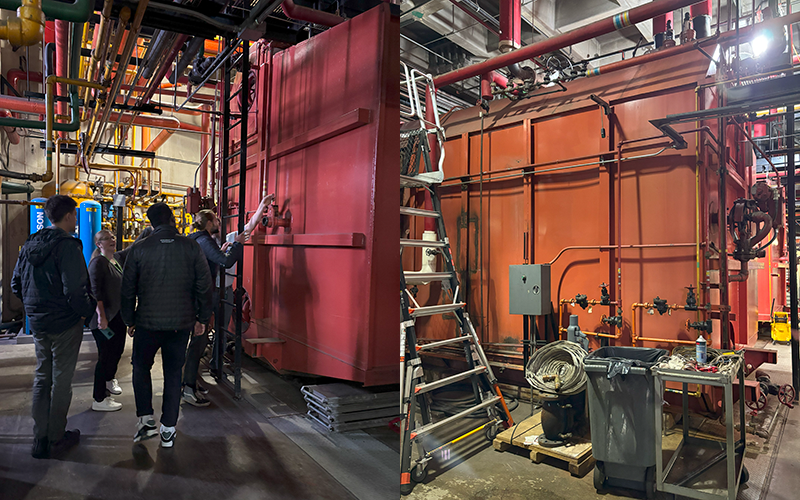
Below: The large cooling towers of the CMP (left) and the natural gas intake pipe (right) supply the plant.
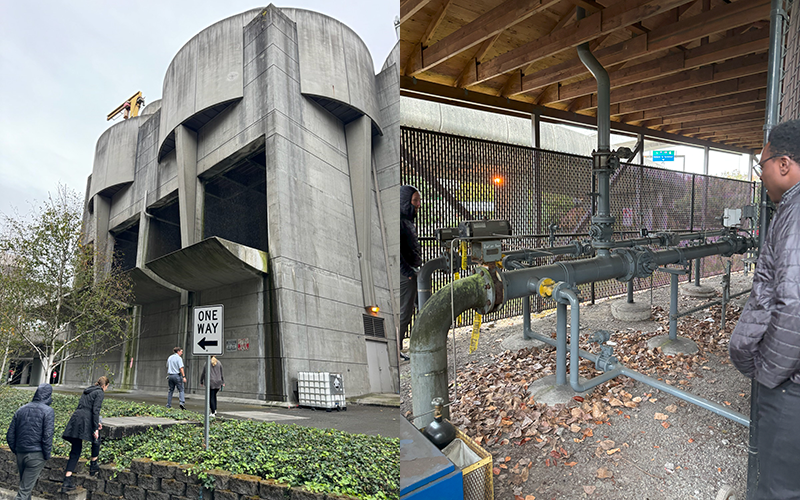
Below: Once the largest source of maritime Scope 1 emissions, Pier 66 now runs entirely on RNG, reducing its environmental impact. These boilers use natural gas to heat the water and air at the Bell Street Cruise Terminal building.
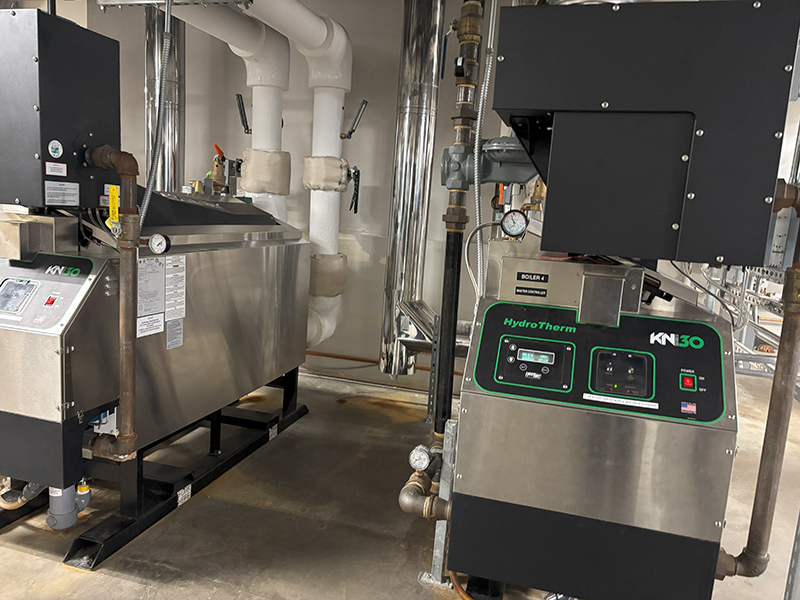
Other stops along the way included the tank farms that store jet fuel and fueling stations for the aviation and maritime vehicle fleets. Across all of these facilities, Port employees are contributing their skills and expertise towards decarbonization and emissions reductions.
The road ahead
Verifying our Scope 1 and 2 GHG emissions provides transparency that the Port is making progress toward its GHG targets. Scope 3 GHG emissions from sources that the Port does not directly own or control, like those from airplanes, cruise ships, and tenant-owned equipment, are more challenging to tackle. That’s why we’re working with industry partners on innovative solutions for decarbonization, such as transitioning all airlines at SEA to commercially competitive sustainable aviation fuel (SAF) by 2028 and exploring low- and zero-emission cruising through the Pacific Northwest to Alaska Green Corridor. Scope 3 emissions for the airport are inventoried and verified by Airport Carbon Accreditation, and maritime Scope 3 GHG emissions are measured every five years through the Puget Sound Maritime Air Emissions Inventory. Our emissions verification process is just one piece of the sustainability puzzle at the Port, and it is a milestone that highlights our commitment to environmental stewardship and transparency.
Want to dive deeper? Check out the official report of our emissions verification on the Climate Registry’s website.

